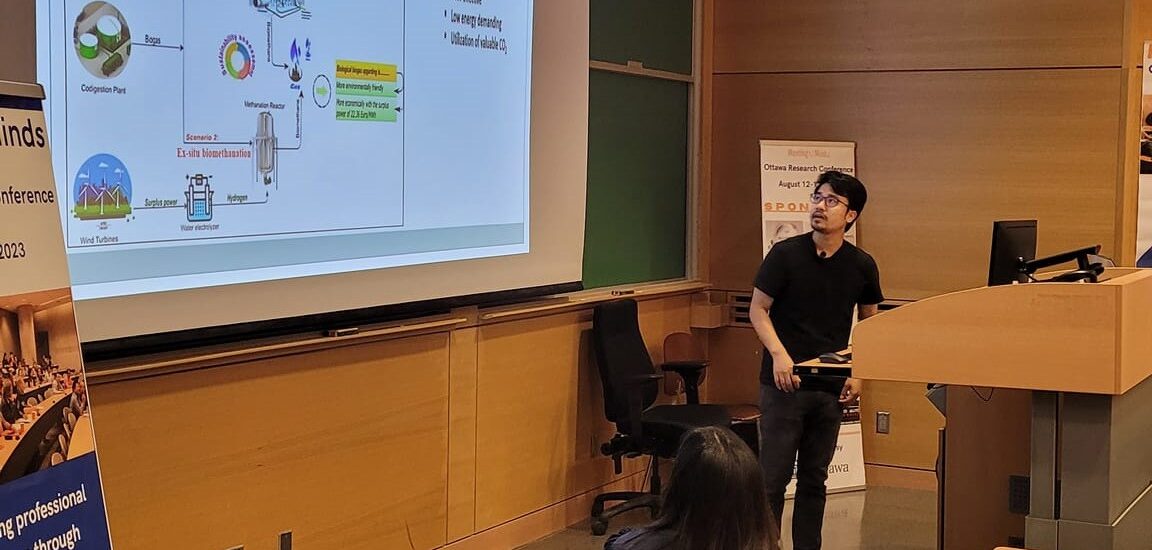Ajay Thapa.
Ex-situ biomethanation is an emerging biological technology that facilitates the use of surplus renewable electricity in the form of hydrogen (H2) and valorizes carbon dioxide (CO2) for biomethane production. However, the major challenge of this technology is the low H2 gas-to-liquid mass transfer. To overcome this, carrier material has been considered an important design parameter in a trickle bed reactor because it facilitates methanogenic biofilm formation on its surface and provides a larger surface area for improving H2 gas-liquid mass transfer. In this study, novel carriers were prepared by coating Hel-X carriers with graphene oxide (GO), and then performances of GO-coated carriers were evaluated with control filled with conventional Hel-X carriers in the fed-batch reactors. As a result, 96.41 ± 2.10%, and 85.29 ± 3.02% of methane (CH4) content were obtained at GO-coated carriers and control, respectively. Additionally, the reactor filled with the GO-coated carriers achieved a CH4 production rate of 0.66 ± 0.09 LCH4/LR.d, which is 50% higher than the control reactor filled with conventional carriers (0.44 ± 0.09 LCH4/LR.d). These findings apparently demonstrated that GO-coated carriers could enhance gas conversion efficiency and increase CH4 production, thereby demonstrating them as efficient biofilm carriers for H2-mediated ex-situ biomethanation.
View/Download the presentation from here.
Keywords: Biomethanation, CO2 utilization, Biomethane, Hel-X carrier, Graphene oxide coated carrier
Author: Ajay Thapa
Department of Civil and Environmental Engineering, Carleton University, Ottawa, Canada






